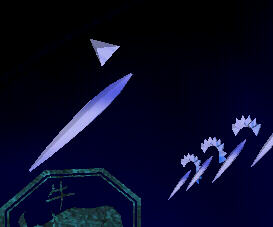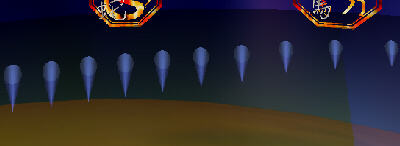|
A zodiac in its simplest form is a clock, as is a computer. The piece implements a functioning calendar and clock, though not entirely rooted in our contemporary time keeping metaphors. I began by researching the Chinese zodiac on the internet, and consulting books on Astronomy I have had since I was a child. Using real-time 3d rendering software, I modeled the elliptic orbit of the earth around the sun, accurately matching its position in relation to the seasons. The zodiac symbols, having seasonal significance, are positioned accordingly. The phases of the moon, the hour of the day, and the minutes and seconds are also calculated and mapped. The goal was not to make a readable clock (though one can indeed learn to read it) rather I wished to use this system as a conceptual framework. Both Gregorian and Chinese calendars are represented in the simulation. The Chinese New Year 1999 will be 16 February. |





